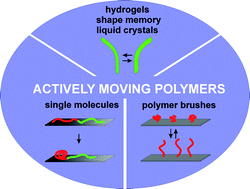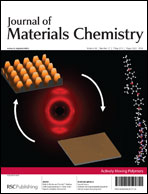Actively-moving materials based on stimuli-responsive polymers†
Abstract
This review addresses recent developments in actively moving materials based on stimuli-responsive

- This article is part of the themed collection: Actively Moving Polymers

 Please wait while we load your content...
Please wait while we load your content...